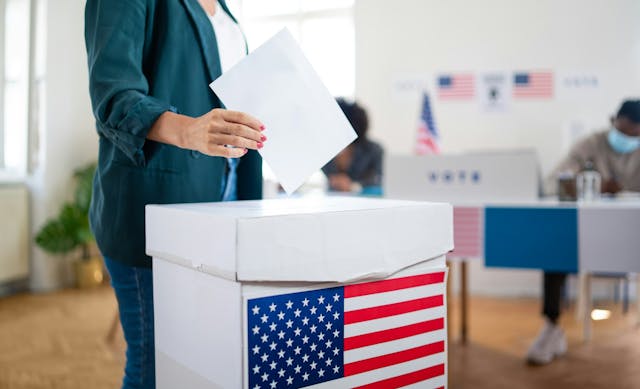In California, Citizens Control the Redistricting Process and It Works

Gerrymandering has been blamed for the increasingly partisan political environment in the United States. In 2008, Californians decided to take the redistricting process away from politicians by creating a citizen-based redistricting commission and it works.
In most parts of the country, the redistricting process, meaning the redrawing of electoral districts after the decennial census, is left in the hands of elected officials. Thelegislatures have primary control of their own district lines in 37 states and over congressional lines in 42 states.
The system has been abused for decades by the two mainstream parties, each of them using the redistricting process to create districts that would favor candidates in their party. By making districts safer for one side or the other, gerrymandering has contributed to the increase in the partisanship of elected officials.
In 2008, Californians voted in favor of proposition 11 -- the "Voter First Act" -- which transferred the control of the redistricting process from the Legislatures to an independent commission comprised of citizens. California State University professor Raphael Sonenshein, author of a recently released report analyzing the success of the commission, believes independent commissions are the most efficient method to limit the influence of partisanship in the redistricting process.
At the cornerstone of a successful citizen commission is the selection process. While the state legislatures in Arizona, Idaho, and Washington nominate members of the independent commission, in California, it is the Bureau of State Audits (BSA) that has the authority to select the commissioners. The agency was chosen for it's known independence.
After a major statewide outreach and applications from over 30,000 Californians, the BSA chose 14 commissioners, including 5 Democrats, 5 Republicans and 4 not affiliated with the two major parties. Eight of these commissioners were selected by a random drawing, the other 6 were chosen by the BSA.
Not only is the commission composed of citizens, it undertook major efforts to obtain the input of California voters. The commissioners made over 235 appearances during the 2010 redistricting process and over 20,000 Californians submitted written comments to the commission. The commission used public input when redrawing California's state and congressional districts. The new maps were used for the first time in the 2012 elections.
Combined with the new nonpartisan top-two primary, citizen redistricting helped produce the most competitive elections in the country.The redrawn districts have also sustained a number of legal challenges and proposition 40, a ballot initiative to maintain the Senate district maps, was approved with 70 percent of the vote.
Last week, the League of Women voters released the first comprehensive review of the California Citizens Redistricting Commission which concludes that this initiative was highly successful, while leaving room for improvement.
At a time where Congress' approval rating is at an all-time low and redistricting is seen by many as a way for incumbents to manipulate the system to get reelected, adopting a citizen redistricting commission in more states could be a solution to not only restore the public's confidence in the electoral process, but also to include voters in this process.



